 Please see Part 1 of this article to learn about Assassin Bugs that lure prey by tricking spiders and termites.
Please see Part 1 of this article to learn about Assassin Bugs that lure prey by tricking spiders and termites.
Commercially Available Species
West Africa’s White-Spotted Assassin Bug (Platymeris biguttatus) and the Red-Spotted Assassin (P. rhadamanthus) of East Africa are sometimes offered for sale in the USA and are well-established in private and public insect collections.
Warning: All Assassin Bugs can administer a painful bite with their sharp proboscis, or rostrum. As infection and an allergic reaction to their venom are distinct possibilities, they should only be kept by well-experienced adults. These and other species can also spray their venom, so protective eyewear is a must. All Assassin Bugs, including the US natives, should be handled only with forceps.
Assassin Bug eggs and nymphs are very tiny, and usually go un-noticed – be sure to use fine grade insect screening over their terrariums to prevent escapes.
Environment and Breeding
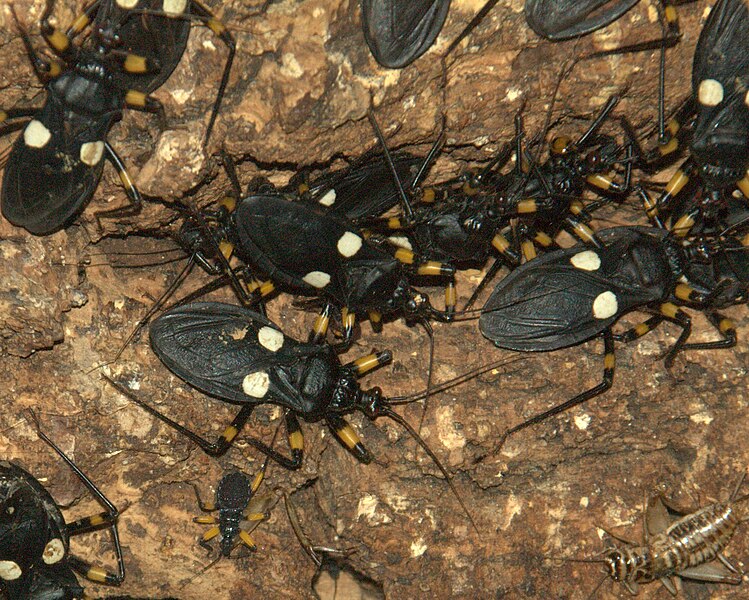 Red and White-Spotted Assassins can be kept in large colonies. They seem to prefer other insects to one-another as food…cannibalism is not a concern as long as they are well-fed and sprayed frequently with water. Both are rainforest inhabitants, and do well in humid terrariums (humidity 60-80%) at 76-86 F. Cork bark and branches should be provided for them to cling to.
Red and White-Spotted Assassins can be kept in large colonies. They seem to prefer other insects to one-another as food…cannibalism is not a concern as long as they are well-fed and sprayed frequently with water. Both are rainforest inhabitants, and do well in humid terrariums (humidity 60-80%) at 76-86 F. Cork bark and branches should be provided for them to cling to.
Both species breed via both parthenogenesis and sexual reproduction. The tiny eggs are deposited on moist substrates and hatch within 30-60 days. The young can be reared with adults, but are easier to care for if removed (please see “Warning”, above).
Diet
Assassins should be provided a varied diet – roaches, caterpillars, moths, grasshoppers, waxworms and many other insects are readily accepted; colonies fed solely upon crickets tend to die out after a few months. Prey is grasped with the front legs and paralyzed by venom injected through the long, pointed proboscis or rostrum. The body fluids and perhaps digested tissue of their victims are then consumed in liquid form; the empty exoskeletons are discarded.
US Native Assassins and Ambush Bugs
The USA is home to an incredible variety of Assassin Bugs and the closely related Ambush Bugs (please see article below). The largest of these, the Wheel Bug, (Arilus cristatus), measures 1.5 inches in length and may be found throughout much of the eastern portion of the country (please see photo in Part 1).
Bee Assassins hide among flowers and will take on large bees and wasps or butterflies with equal relish.
Ambush bugs are very stout and often brightly-colored, with thick, grasping front legs that lend them the appearance of small, squat Praying Mantids (please see photo). They are rarely kept but very interesting and worthy of your time and efforts – we have so much to learn about them (please see article below).
Research
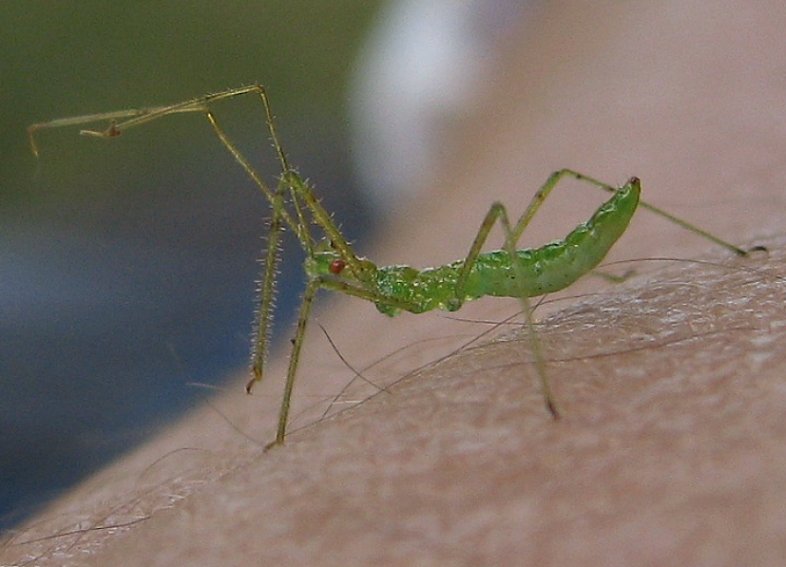 Also known as Kissing Bugs, certain South American Assassins transmit the protozoan that causes Chagas Disease, a serious illness that affects millions of people. The same protozoan has been found in blood-feeding Assassin Bugs native to the USA and elsewhere, although the disease itself is not present. More research is needed – anything you might learn about harmless species could possibly be applicable to disease-causing types – please write in with your observations.
Also known as Kissing Bugs, certain South American Assassins transmit the protozoan that causes Chagas Disease, a serious illness that affects millions of people. The same protozoan has been found in blood-feeding Assassin Bugs native to the USA and elsewhere, although the disease itself is not present. More research is needed – anything you might learn about harmless species could possibly be applicable to disease-causing types – please write in with your observations.
Further Reading
Great info and photos of native Assassin and Ambush Bugs from the University of Kentucky.
Excellent Videos
Assassin Bug feeding upon blood and Ambush Bug catching a bee.
Assassin Bug image referenced from wikipedia and originally posted by Ozwildlife
White Spotted Assassin Bugs image referenced from wikipedia and originally posted by Greg5030
Assassin Bug Nymph image referenced from wikipedia and originally posted by babbage
 That Reptile Blog – Reptile, Amphibian and Exotic Pet Care and Information
That Reptile Blog – Reptile, Amphibian and Exotic Pet Care and Information

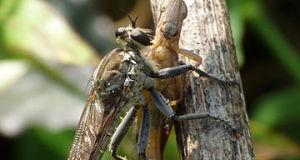
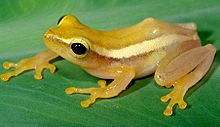
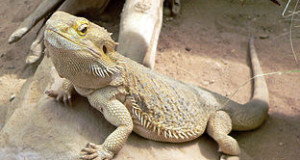
Hello. This year is the second year we’ve befriended what I think is an assassin bug. Well, he is exactly the green little guy you have pictured, and I couldn’t tell which particular species that is from the article. He seems so docile, so I was surprised, and naturally concerned when I read your warning. My 5 year old (shes VERY gentle) has spent hours enjoying his company, but now I’m thinking it’s not worth the risk of getting bitten….?! Is that little green guy dangerous now, or only as an adult? I just wiggled a mig. around with some tweezers, he wasn’t interested, and I even annoyed him a bit, and he still didn’t act aggressive. The one we found last year was the same gentle disposition, I even had to save it from a spider and spent time meticulously getting the web off of him. (crazy, I know!). What is your advice?
Elana
Hi Elana,
Very glad to hear you and your daughter are so interested in these unique creatures. Unfortunately identification is difficult due to the huge number of native species and variability in color; please see this site for photos of some. An Audubon or Peterson Field Guide to NA Insects would also be helpful, and I’m sure you and yours will enjoy.
We do not know a great deal about their venom, and allergic reactions are always possible, so it’s best to err on the side of caution where a child is concerned.In any event, small ones will need tiny live insects in order to survive. Please bear in mind that, no matter how gentle you are, insects will only respond via instinct, and will bite/sting if able. There are great, safe options if you wish to raise insects, including commercial kits that supply caterpillars, food and cage – I ordered 1 for my 4 yr old nephew and he was able to watch them transform into butterflies; many other species can b easily collected and kept also. please let me know if you need more info.
Best, Frank
hi
Hello I live in West Virginia and deal with these bugs allot. We own plants out here and we like to put them on our plants. They help a lot! Thinking of keeping one for a pet. The species is a wheel bug. I am even righting a report on them. Any tips for making a habitat for one, what I should put it in, or what I should expect?
Hello,
Glad to hear of your interest. I’ve kept wheel bugs from time to time…plastic terrariums or goldfish bowls, or large jars covered with a piece of cheesecloth work well. Sticks to climb on and some hiding spots in the form of live or plastic plants. Moths, crickets, smooth caterpillars and other soft bodied insects are taken as food. Spray daily with water. Would be interesting to see if you can keep several, perhaps breed…
Do not handle, always a chance of sensitivity to their toxins.
Enjoy and pl let me know how all goes, best, frank
I just got stung/bit by one one these kissing bugs should I be worried
Hello,
You should have any bite or sting checked by a doctor..there are hundreds of species, none studied are known to have toxins that re dangerous to people, but there’s always the chance of an allergic reaction or infection, or that you have come in contact with an unstudied species. I hope all goes well, Frank
WE HAVE CAPTURED 2 ASSASSIN BUGS IN GREENWICH, CT. MY BOYS HAVE NAMED THEM , DRACULA SLICE GRANT AND STING GRANT, BECAUSE MY 8 YEAR OLD OBSERVED THAT DRACULA SEEMED TO FEED MORE AT NIGHT AND ONLY DRAIN THE OTHER INSECTS BLOOD. I WAS WONDERING IF, SINCE SOME SPECIES COLONIZE, THEY MAY GIVE OFF PHEROMONES WHICH COULD ATTRACT MORE OF THEIR SPECIES INTO OUR HOME. KIND OF LIKE THE WAY STINK BUGS ARE RUMORED TOO, IF YOU KILL ONE. ALSO, DO DO SOME EXHIBIT MULTIPLE FEEDING TRAITS, SUCH AS MAMMAL BLOOD AND INSECT BLOOD.
THANKS SO MUCH FOR ALL THE INFO SO FAR .
Hello,
Thanks for your interest and kind words.
Many insects use pheromones to attract mates, wasps and relatives do so for nest defense etc. The assassin bugs in the NE USA do not live socially, and so will not draw others. There are a dozen or so US species that feed upon mammal blood, many more in the tropics (Chagas disease is spread to people by several in Latin America); none, as far as I know, feed on insects and mammals…rather they are specialize in either. be sure your children do not handle them….always a chance of an allergic reaction to toxins, or a bacteria etc. that may be transferred. but great that they are interested. Enjoy, best, Frank